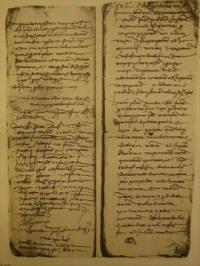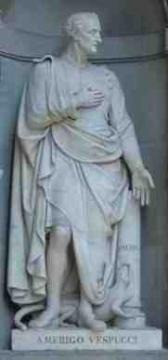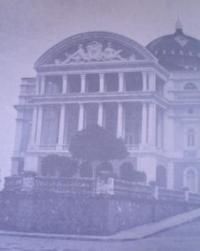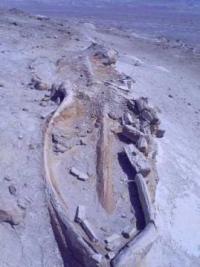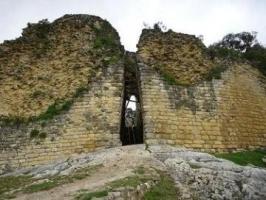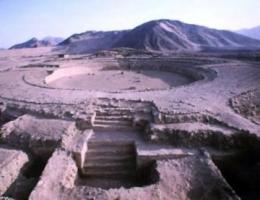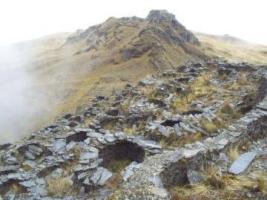Copy Link
Add to Bookmark
Report
Syndicate ZMagazine Issue 177

:::::::::::::::::::::::::::::::::::::::::::::::::::::::::::::::::::::::
|||||||||||||||||||||||||||||||||||||||||||||||||||||||||||||||||||||||
||||||| ZMAGAZINE #177 October 1, 1989 |||||||
|||||||---------------------------------------------------------|||||||
||||||| Volume 3, Number 40 Ron Kovacs, Editor |||||||
|||||||---------------------------------------------------------|||||||
|||||||(c) 1989, Rovac Ind., PO Box 59, Middlesex, NJ 08846-0059|||||||
|||||||=========================================================|||||||
||||||| News Headlines.... |||||||
||||||| * Atari Announces New President |||||||
||||||| * Nintendo Doubles Gameboy Output |||||||
||||||| * Ledbetter Shipping Cartridge |||||||
||||||| * New Uploads Available On The Services |||||||
|||||||=========================================================|||||||
|||||||CompuServe: 71777,2140 GEnie: ZMAGAZINE|||||||
|||||||||||||||||||||||||||||||||||||||||||||||||||||||||||||||||||||||
:::::::::::::::::::::::::::::::::::::::::::::::::::::::::::::::::::::::
CONTENTS
-----------------------------------------------------------------------
Issue #177
<*> The Editors Desk.....Ron Kovacs <*> ZNet Newswire...............
<*> 800 Sound Mod........Bob Wolley <*> Disk Directory Salvage......
<*> September Uploads....CompuServe <*> September Uploads......GEnie
<*> Fun Memo..............A. Dutura <*> ZMag Archives...............
THE EDITORS DESK
-----------------------------------------------------------------------
by Ron Kovacs
I hope we have not upset our readers too much with our change over to
this 80 column format. The atascii format was indeed nice to look at on
BBS systems, but the straight ascii readers cannot read the issue
without converting it first.
I am making an attempt to gather some programers so that a few
suggestions we have received can be discussed and written. If you have
some spare time and are interested in writing some utilities, please
leave me email and we can chat.
This is our 177th issue, and our 195th release. The other issues were
special editions on computer shows, single topics and special ZMag
Indexes. With all this information, we are now going to provide a
weekly reprint from one of the many issues. This week, we go back to
February 23, 1987, Issue #40 with a reprint on hooking up a hard disk to
your 8-bit. If you have a specific article or topic you would like us
to cover, let me know and we will make it available.
And, Thanks for reading!
ZNET NEWSWIRE
-----------------------------------------------------------------------
~ Atari Corporation Press Release: 9/29/89
I am pleased to announce that H. Michael (Mike) Morand joined Atari on
September 25, 1989 as the President of Atari Computer (U.S.). Mike will
be responsible for all operational aspects of Atari Computer sales,
marketing, distribution and administration within the United States.
Mike joins us from AST Research, Inc., where he was Vice President of
Systems Marketing and was responsible for launching their desktop
computer products into the market. In addition, Mike was in charge of
AST's advertising, public relations, and reseller development.
Mike's background also includes experience as a General Manager, and he
has held several senior level sales and marketing positions. Previous
companies he has been with include Xerox Corporation, Scientific Data
Systems, Data Card Corporation, MSI Data Corporation, and Litton
Systems, representing over 25 years experience in the computer industry.
Please join me in welcoming Mike to Atari.
Best Wishes,
Sam Tramiel
* Roy Goldman left a message on GEnie a little over a week ago updating
the status of Daisy-Dot 3. Here are a few things being discussed:
*** Commands for controlling left & right margins, hanging indents,
changing densities, centering, flush right, justification, four
different character widths, hard spaces, hard hyphens, and changing
fonts are all finished. Up next are multiple height options and a new
tabbing system that should eliminate almost every alignment problem.
Daisy-Dot 3 might be shipping in January 1990. Stay tuned for details.
* A new version of TextPro is being worked on and according to Ron Riche
a beta version was supposed to be available this past weekend. Here is
some excerpts from his message on GEnie. *** I will send the last beta
version over the service by Friday of this week. If I encounter no
problems this version will run from high memory and use all RAM
underneath as buffer space. The lower the MEMLO the bigger the buffer.
The new version also has a couple of extra goodies, a control lock,
fancy screen print, and a number of bug fixes from the original that
were never taken care of. I am debating whether to leave the 'Binary
Load-' option alone in S-DOS versions (it will probably never work well
with the X-Cart) or using the DOS Connmand ture instead, which allows
you to type a command to DOS to be Xecuted on exit. Tell me which would
be more useful...
* Atari's new User Group Coordinator requests that user group officers
send in all the information about the group including the groups name,
address (preverably a Post Office Box), a contact name, and phone
number. Next month a revised user group listing will become available.
For more information on user group registration, contact Bob Brodie at
Atari Corp (408) 745-2052
* Diamond's Alan Reeve recently announced that Diamond Write has
started shipping as version 1.0. This version includes different fonts,
mixing styles, search and replace, 80 column, graphics printout, ruler
and more. A spell checker and XEP80 support has not beem included, but
a spell checker will added shortly and become available free as an
upgrade.
* DataQue, the makers of the Turbo816 has announced the first program
for the product. Turbo_Calc is a spreadsheet program with the following
features: Runs on XL/XE with 32k or 64k of RAM, 400/800 with revision B
Atari OS and at least 32k RAM, Turbo-816 Systems using Standard RAM or
Expanded RAM, uses up to 8Mb of Expanded RAM, 64 Rows by 64 Columns Cell
Grid, Shell to DOS (using MEM.SAV or equivalent if needed by DOS),
compatible with DOS 2.x, MYDOS, DOSXL, SpartaDOS, or SPX (Standard
memory model or less than 48k of expanded with SPX), automatic detection
of memory type available, cell (block) move, copy, delete, kill, and
edit, runs under Turbo-View Windowing Environment (FAST!!!) and all
commands also have HOT key equivalents. Many help screens available via
hot key or Turbo-View. Cartridge based, so it works with HD, or Floppy
Systems. Suggested retail price will range between $30 and $40.00.
Look for release of this product in mid November.
* Nintendo announced last week it will raise its monthly output of
Gameboy video game machines from 300,000 units per month to 400,000 per
month by the end of the year. Nintendo has sold 710,000 Gameboys since
April. In the US 450,000 Gameboys have been sold since it began
shipping here at the end of July. Nintendo sells ehe hand-held video
game for $109.95 in the US.
* Keith Ledbetter has shipped the first batch of Express! terminal
cartridges. The stackable cart for the 8-bit Atari gives unparalleled
power in an instant-load package. A disk drive is not even required for
simple terminal use with any standard Hayes compatible modem. It
supports numerous batch transfer protocols at speeds up to 19,200 baud
and will work on Atari 1030, XM301, and SX212 direct connect modems.
Featuring windows and drop down menus (although NOT using a mouse), it's
quite easy to use. $69.95 from Orion Microsystems, 2211 Planters Row
Drive, Midlothian, Virginia 23113.
ATARI 800 SOUND MODIFICATION
-----------------------------------------------------------------------
by Bob Woolley
First of all I will not be responsible for any damages. This works and
it worked great on my 800. I did it in one day.
First, you need to go to Radio Shack and get a switch which has four
connection prongs. You may want a little switch box and some extra
wire.
Second, you need to take the case of you computer apart. You will find
down in the right hand corner of the computer a speaker and a little
plug where that speaker connects. Remove the speaker for the computer
(but mark the plug so you know which way to plug it back in); then cut
both wires and strip them.
Now you take the switch and solder the wires on to it or the extension
wires you may have chosen to use. Then plug the speaker back in and put
your CPU back together. After this you may toggle your computer sound
on an off.
This may also be done with a volume switch instead of a toggle type
switch. If you have any questions you may contact me at the Reef BBS
(S*P*A*C*E South) via E-mail or base #6 or #7. The Reef BBS (206) 848-
3371 South Hill, Washington.
DISK DIRECTORY SALVAGE
-----------------------------------------------------------------------
by Bob Prince
Reprinted from the NACEC Newsletter
While cleaning up some files the other day, I had a dreaded experience.
A directory call from DOS produced the feared message -ERROR 144-. What
was on that disk? I didn't know! All I knew was that it was a full
double density disk of documentation files. So I booted up my trusty
disk utility DISKWIZ 2 (vintage 1982 form Jerry Allen). Many other
sector editors are available to let you look at the contents of a disk
and change anything you like.
What I found confirmed my worst fears - two bad sectors, sector 361 and
362. Unless you know something about Atari file structure, the
significance of this is not obvious.
After all, what's the big deal about losing two sectors of text? Well
what that means in this case is that the first two sectors of the
DIRECTORY were lost. Short of programming to read the disk contents
into a series of files and editing them into meaningful files, the whole
disk was useless. (Not quite, since I did manage to copy five files,
but you get my point).
Back to DISKWIZ 2. I mapped the disk and found 26 files on it - all
consecutive. Then I went to the first sector of each file and read it
to see the name of it. Between what I was able to salvage from my disk,
what I had in backups and what I found posted on local BBs's I could
replace about half of them. That still left 99K bytes of information
lost. I decided to try to salvage it. I checked the file links and was
relieved to learn they were intact.
I reasoned that all I had to do was reconstruct an acceptable directory
so DOS could find the start of each file and then copy file by file to
another disk.
I guess it's time to have a brief discussion on how DOS manages files.
The directory is contained on sectors 361 - 368. That's 8 sectors.
Each directory sector has 128 bytes and each file takes 16 bytes to
record all necessary information:
INFORMATION BYTE(S)
===============================
FILE STATUS 1
FILE LENGTH (sectors) 2,3
FILE START SECTOR 4,5
FILENAME 6-13
EXTENSION 14-16
That allows 8 files per directory sector times 8 directory sectors for a
maximum of 64 files per disk. For your information, all data is shown
in hexidecimal (ugh!) and byte pairs are always in low byte - high byte
order (for example decimal 525 equals hex 020D, but would be entered 0D
02). File status could be never used (00), normal (42), locked (62),
deleted (80), or open (43 or 63).
Next I decided to enter the information from my map and manual file scan
in the order and format described above. One reason I chose DISKWIZ 2
for this job is that it has some handy features such as a dec-hex
conversion, a directory screen print and a graphic screen dump
compatible with my printer (Gemini 10X). The formatted directory proved
very useful in checking my editing, and before long I had sucessfullly
completed my disk surgery...and learned quite a bit about file structure
in the process.
SEPTEMBER UPLOADS - COMPUSERVE
-----------------------------------------------------------------------
Ctsy CompuServe Atari8 SIG
The following is a list of uploads to the CompuServe Atari 8-Bit Forum
for the month of September.
LBPLUS.ARC/binary 26368
This is LeBreak Plus. For use in the creation of ATASCII ART/TEXT
Files/BBS welcome Msgs, or any Msgs you would like to create. Replaces
LeBreak Ten or the Magic Cursor. Please read the DOCS before using the
program. Only systems with atleast 48k can use this. This is version 2
and it DEFINITELY works! Mike/74730,405
=
Z176.ARC/binary 16384
New Release Day, New Format, New Editor. ZMagazine Issue #176
<*> Editors Desk, <*> Znet Newswire, <*> 2 Type In Programs, <*>
WAACE Update, <*> AUGS Announced, <*> Hard Drive Notes.
=
COUNTS.BAS/binary 6400
This program will give the evaluation for a US Postal Service rural
delivery route. You need the totals from PS Form 4241(x). Just input
the totals and receive a printout of the route evaluation. It is
written in basic and requires a printer.
=
ZNEWS.TXT 1557
Press release from Rovac on ZMagazine.
=
CHKFRG.ARC/binary 11520
This file check the percentage of fragmentation of files on a SpartaDos
disk (Floppy, Hard, Ram). It is mainly used to see if your Hard Drive
is being used in a optimal manner.
=
LIFE.ARC/binary 24832
A version of the simulation of LIFE with a GEM like interface. Allows
for saving, loading, and printing of patterns plus other features.
=
ETIME.ARC/binary 7296
Action source and compiled program to compute elapsed time between two
times you enter. This program shows the use of the SDOS.ACT routines to
get parameters from SpartaDOS or to ask for values if parameters aren't
passed. Also shows how to restrict typed input to a specific group of
characters (numerals in this case) and trap editing characters using a
routine from GETSTR.ACT. Bill Aycock
=
PASCAL.ARC/binary 30720
Draper Pascal 2.1 software file. Everything you need! This is the very
latest version of Draper Pascal for all 8 bit Atari systems. Another
file contains a 39 page manual. Draper Pascal is now Shareware!
=
PASDOC.ARC/binary 31744
Draper Pascal 2.1 is now Shareware. This is a 39 page documentation
file covering features, a complete tutorial, reserved words, and much
more! Major 8 bit Atari software language.
=
Z175.ARC/binary 15744
ZMagazine #175 for 19 September 1989. This ARCed news/reviews issue
contains: Atari user group station, CIS new uploads, FACE Atari talk,
GEnie new uploads, WAACE 'Fest is Alive and Well.
=
CHRCHG.ARC/binary 11136
A Dungeon bug causes possession items to get garbled or disappear. Then
an old character must be updated. This Dungeon utility changes what's
already on that disk. Change any stat, such as strength, hit points or
experience points. Change quantity of guild or carried items, the
number of times you can use eyes and horns, or location. Even go into
arena and palace. It also tells your direction. Thanks, Don Lebow for
Zap. Use Superunarc after download.
=
SDOS.ACT 3617
This file contains source code for Action! routines that allow you to
access SpartaDOS's command line. These routines will let you pull
parameters from the command line one by one, or you can get the entire
line at once if you wish. Demo routine is included - I recommend that
you compile and run the demo until you know how the routines will
behave. Bill Aycock
=
Z174R.ARC/binary 13696
ZMagazine #174 re-release for 12 September 1989. This ARCed news/
reviews issue contains: Editor's monitor, Computer Talk, Jersey Atari
Computer Group, The Mouse Loses its Tail, and Crazy Eights.
=
WOFDAT.BAS/binary 18176
Now the best Wheel of Fortune is even better. If 900 puzzles weren't
enough or if you just wanted to be able to write your own puzzles,
here's a puzzle file maker for WOF.DCM. This is an improved version of
the puzzle maker and allows the space and -&- characters to be used in
the category. Read the DOC file WOFDAT.DOC.
=
WOFDAT.DOC 7164
Documentation for WOFDAT.BAS -- puzzle maker for Wheel Of Fortune file
WOF.DCM
=
ZREAD.BAS/binary 3456
Read ZMAGS (8-Bit) by entering only the three numbers; as long as the Z
is on the disk as ZMAGxxx.TXT. Enjoy. *Andrew*
=
WOF.DCM/binary 69632
This is the Best Ever WHEEL OF FORTUNE game. It has 900 puzzles and
plays just like the original TV version. It requires 48K & ATARI BASIC.
Originally uploaded as WOFSCR.XMO, it was included in the BEST OF ATARI8
catalog. Extract with DISCOM to make the program disk. Instructions in
WOFDCM.DOC. Y ou can make your own puzzles using WOFDAT.BAS. An
additional disk of 900 MORE puzzles is available in WOFPUZ.DCM! -Warren
Silberstein-
=
WOFDCM.DOC 19300
Documentation for WOF.DCM -- Wheel of Fortune simulation in Atari Basic.
=
WOFPUZ.DCM/binary 40448
A Disc full of 900 more puzzles for the Best WHEEL OF FORTUNE. For use
with WOF.DCM (previously WOFSCR.XMO). Use DISCOM to turn this file into
a disc.
=
AND1.TXT 11689
This is Atari NewsDesk Volume 1, Number 1. Atari NewsDesk is a new
monthly newsletter supplement published by the Atari Exchange Of
Louisville, Ky. This month... Kentuckiana AtariFest Cancelled,
Washington AtariFest Announced, And more!
=
BBSREP.TXT 3819
This is the Atari Scene! BBS Report 09/15/89 edition.
=
CLRDSK.ARC/binary 4224
This program will clear (write zeros) to any SpartaDos Disk device,
i.e. MIO RamDisks, Hard Drives, Disk Drives, that will return their
configuration. It is used from the command line. Includes Mac65 source
code.
=
MIOLCK.ARC/binary 2048
This file will toggle the Lock status on your MIO Ramdisks and Hard
Disks from the SpartaDos 3.2 or SDX command line. Includes Mac65 source
code.
=
WHATIS.ARC/binary 8448
WHATIS 2.4 now recognizes 37 types of files - AlfCrunch, ARC, DiskCom,
ML, pictures, and many other file types for various computers. Load
from any DOS (DOS-XE too!) and enter the name of the file(s) or
directory to check. Sparta users may pass the filespec on the command
line. Brief docs with a list of file types WHATIS will recognize is
included in the ARC. (v2.4 adds a number of picture types to the list.)
Bill Aycock
=
HWSALE.TXT 2353
Read this ASCII file for a listing of current Hardware items we have on
SALE! -Mark- -IC-
=
SEPTEMBER UPLOADS - GENIE
-----------------------------------------------------------------------
Ctsy GEnie Atari8 Roundtable
Here is a capture, (re-edited), of available files for downloading on
GEnie which have been uploaded during the month of September.
Number: 4623
Name: CONTENTS78.TXT
Address: C.WALNUM
Bytes: 3780 Library: 23
Description: This is the table of contents from the November 1989 issue
of ANALOG Computing/ST-Log.
=
Number: 4622
Name: CALENDAR TOOL.ARC
Address: TOM.ROBINSON
Bytes: 16380 Library: 9
Description: This calendar is customizable, versatile, and has fast
search abilities among its features. Multiple printing options, day-
specific reminders or annual messages-- pretty handy! Good docs with
it, and it's NOT written in BASIC. It's author released it into the
public domain some time back (it was once commercially available). I
haven't tested it in-depth with many DOSes, but it has no problems with
Atari DOS 2.5 and seems to be fine with SpartaDOS.
=
Number: 4621
Name: ZMAG176.TXT
Address: ZMAGAZINE
Bytes: 32760 Library: 13
Description: NEW RELEASE DAY, NEW EDITOR, NEW FORMAT. <*> Editors
Desk, <*> ZNet Newswire, <*> 2 Type-In Programs, <*> WAACE Update,
<*> Hard Drive Notes. This is the same as ZMAG176.ARC, except you can
<L>ist this online, or download it without having to UNARC it. Text is
ASCII.
=
Number: 4620
Name: EDITBAS.LST
Address: ZMAGAZINE
Bytes: 3780 Library: 13
Description: This BASIC source was extracted from Issue #176 of
ZMagazine. Article can be <L>isted online, or downloaded then ENTERED
into your program editor. File is ASCII. See ZMAG176.ARC/ZMAG176.TXT
in this library for details.
=
Number: 4619
Name: TEXT_FILE.LST
Address: ZMAGAZINE
Bytes: 5040 Library: 13
Description: This TURBO BASIC source was extracted from Issue #176 of
ZMagazine. Article can be <L>isted online, or downloaded then ENTERED
into your program editor. File is ASCII. See ZMAG176.ARC/ZMAG176.TXT
in this library for details.
=
Number: 4618
Name: KENFIG.ARC
Address: BOB.PUFF
Bytes: 5040 Library: 2
Description: This is a utility program from Frank Walters that allows
you to manipulate your MIO configuration with MYDOS, TOPDOS, and
SpartaDOS. It also allows you to use MYDOS with the MIO ramdisk(s).
=
Number: 4614
Name: ZMAG176.ARC
Address: ZMAGAZINE
Bytes: 17640 Library: 13
Description: See above file for contents.
=
Number: 4613
Name: KEYMASTER.DOC
Address: E.HABBERSTAD
Bytes: 6300 Library: 2
Description: Documentation for Keymaster, the XL/XE keyboard
enhancement program for basic and MAC65 users.
=
Number: 4612
Name: KEYMASTER.COM
Address: E.HABBERSTAD
Bytes: 7560 Library: 2
Description: XL/XE keyboard and screen editor enhancement for everyday
use by users of Basic and MAC65. Features 32 byte key buffer, nine
special function keys, 26 unit macro table, choice of qwerty or dvorak
keyboards, and special three line bottom of screen display showing
Dvorak, graphics or international character keyboard layouts.
=
Number: 4611
Name: CALENDAR1990.TXT
Address: K.HELM
Bytes: 11340
No description available.
=
Number: 4610
Name: COUNTSHT.BAS
Address: H.KING
Bytes: 7560 Library: 9
Description: Written in basic and requires a printer.
=
Number: 4609
Name: Z175.ARC
Address: ZMAGAZINE
Bytes: 16380 Library: 13
Description: ZMagazine #175 for 19 September '89. This ARCed news/
reviews issue contains: Atari User Group Station, CIS new uploads, FACE
Atari Talk, GEnie new uploads, WAACE 'Fest is Alive and Well.
=
Number: 4608
Name: SEPT89.TXT
Address: E.LAMBETH1
Bytes: 5040 Library: 12
Description: This is the fall 1989 issue of Atari Talk. Atari Talk is
the official newsletter of the Federation of Atari Computer Enthusiasts,
an international Atari users group.
=
Number: 4607
Name: AUGSPR.TXT
Address: MARTY.A
Bytes: 7560 Library: 12
Description: This ASCII text file is a press release about a *new*
service for ALL Atari User Groups called AUGS (The Atari User Group
Station). May be downloaded or read online with the <L>ist command.
=
Number: 4605
Name: PASDOC.ARC
Address: N.DRAPER
Bytes: 34020 Library: 2
Description: This is a 39 page documentation file for the latest
version of Draper Pascal. It is now Shareware! This is a major
language for the Atari 8 bit systems. Another uploaded file contains
the complete Draper Pascal 2.1 software. This file contains a
description of the Draper Pascal features, a complete tutorial,
Compiler, Editor, System information, and much more!
=
Number: 4604
Name: PASCAL.ARC
Address: N.DRAPER
Bytes: 32760 Library: 2
Description: This is the latest version of Draper Pascal for Atari 8
bit systems. It is now Shareware! This is a major language for the
Atari 8 bit systems. Another uploaded file contains a 39 page manual
describing the many features of Draper Pascal, a complete tutorial,
Pascal definitions, and more.
=
Number: 4603
Name: SEABAT.ARC
Address: T.CRAWFORD1
Bytes: 7560 Library: 10
Description: This is a game programmed in Atari BASIC that is played
like Milton-Bradley's game called Battle Ship. It's nothing fancy, but
I think it's fun and can be helpful in learning to program in BASIC.
Respect and credit go to Milton-Bradley for their marketing of the REAL
Battle Ship. Copyrighted by Tim Crawford, but released to PD. Feel
free to modify to your own liking, but remember 'from whence it comest'!
=
Number: 4602
Name: LQUEST.BAS
Address: T.CRAWFORD1
Bytes: 8820 Library: 10
Description: Game for up to 4 players - copyrighted, but PD by Tim
Crawford. Works similar in object and play to 'Wheel of Fortune'.
Programmed in regular interpretive BASIC; modify to suit your taste,
but remember the author (please!).
=
Number: 4601
Name: SOFTSALE.TXT
Address: C.MICHAUD
Bytes: 1260 Library: 11
Description: Good 8-Bit Software for sale at low prices. Graphics
Interface which no 8-bit owner with a dot matrix printer should be
without. You must check out this file. List online or download. (Not
Compressed)
=
Number: 4600
Name: Z174R.ARC
Address: ZMAGAZINE
Bytes: 15120 Library: 13
Description: ZMagazine #174 re-release for 12 September 1989. This
ARCed news/reviews issue contains: Editor's monitor, Jersey Atari
Computer Group, The Mouse loses its tail, and Crazy Eights. This re-
release supercedes the previous issue #174.
=
Number: 4598
Name: TICTACTOE3D.ARC
Address: L.KIRKPATRI1
Bytes: 6300 Library: 10
Description: This is a multi-level three dimentional tic-tac-toe game.
You can play human versus human, human versus the computer or computer
versus computer. GTIA chip is required in a 48K 8-bit Atari.
=
Number: 4597
Name: MAXEDIT.ARC
Address: MARTY.A
Bytes: 12600 Library: 27
Description: This program, when UnARC'd, will let Oasis BBS v4.x and
older edit nearly ALL the parameters saved in the pass word files. This
is an OFFLINE editor and can not be used online.
=
Number: 4596
Name: CLRHLPR.ARC
Address: MARTY.A
Bytes: 5040 Library: 27
Description: This program, when UnARC'd, will help you set the screen
colors for the various MBEs on the Oasis BBS. Can also be used to
determine the values needed to get whatever screen color that you want
for other programs/reasons.
=
Number: 4595
Name: PC_MYDOS.ARC
Address: G.HINES
Bytes: 26460 Library: 2
Description: Get this file to an MSDOS machine. Unarc and use the
program to format a diskette on the PC. Use the program to copy from
MSDOS to this new diskette and then read it on any Atari single sided
drive in double density. Use MyDos, SpartaDos, etc.. I have had
problems using SpartaDos X but the 3.2 version is fine. *SysOp's Note*
This is an MSDOS program, NOT an Atari program!!!
=
Number: 4594
Name: ILBMRD14.ARC
Address: JDPOTTER
Bytes: 12600 Library: 4
Description: Version 1.4 of ILBMREAD program to view Amiga IFF/ILBM
picture files. This version adds a few features like quiet I/O,
selectable monochrome mode, toggle Antic off for faster loading, and
unsticking XF551 drives. This program is ShareWare: please send
feedback. Enjoy!
=
Number: 4592
Name: VIEW9.ARC
Address: J.WARD8
Bytes: 1260 Library: 4
Description: This is a single file graphics 9 (PI9) viewer that I wrote
to save hauling out a slideshow program to check out new pics. It may
be run from the Sparta command line as VIEW9 Filename.ext, or it will
prompt you to enter the name from any other dos. Short and sweet, it's
only about 500 bytes!
=
Number: 4591
Name: Z173.ARC
Address: ZMAGAZINE
Bytes: 16380 Library: 13
Description: ZMagazine #173 for 5 September 1989. This ARCed news
issue contains: User Group Notice--New Jersey, Surge protection, Analog
October Contents, 130XE upgraded, Black Box information, Washington DC
Atarifest update, and more.
=
Number: 4590
Name: CRAZY8.TXT
Address: LAKE31
Bytes: 8820 Library: 12
Description: Odds and Ends and more info concerning the Crazy-Eights
contest food for thought and a chance to win fifty dollars. Whadya say?
=
Number: 4589
Name: DOS2DOS3CONV.ARC
Address: I.RODRIGUEZ
Bytes: 2520 Library: 2
Description: This program can convert any file from a DOS 2 disk to
DOS 3. It can copy true double density files (true double density drive
required) and from enhanced density DOS 2.5 disks (the files that appear
as <filenameext> in the directory) as well as the standard DOS 2.0s
files. You may also want to download the docs for this file (#4587) and
its twin brother: Convert DOS 3 to DOS 2 (file #4588).
=
Number: 4588
Name: DOS3DOS2CONV.ARC
Address: I.RODRIGUEZ
Bytes: 2520 Library: 2
Description: This program is for converting files from DOS 3 to DOS 2
disks. It is a new version of the program I uploaded more than a year
ago. The difference with the previous version is that this one can make
multiple passes and corrects a few bugs of the older version. You may
also want to download the docs for this file (#4587) and the twin
brother of this program: Convert DOS 2 to DOS 3. That program can
convert files from true double density disks to DOS 3. It is file #4589
=
Number: 4587
Name: DOSCONVDOC.ARC
Address: I.RODRIGUEZ
Bytes: 5040 Library: 2
Description: This file contains the docs for the two converting
utilities. Since both versions, the 3 to 2 and the 2 to 3, are used in
the same way there's only one doc file to download.
=
Number: 4586
Name: VCTEMPS.ARC
Address: MARTY.A
Bytes: 28980 Library: 9
Description: This ARC'd file contains a number of different templates
for use with VisiCalc. Note that you MUST have VisiCalc to use these!!
This is a re-upload of an older file <TEMPLATES.VC #1498> in ARC format
to reduce the size for faster transfers.
=
FUN MEMO
-----------------------------------------------------------------------
Compliments of (GEnie) A.DUTRA
_______________, 19___
TO: ______________________________
[] As per our agreement [] In spite of our agreement
[] Congratulations on your New Baby/Retirement/New House/Old House/Pay
Increase/Birthday/Wedding/Divorce [] Keep your comments to yourself
[] Put a stamp on your next letter! [] Please don't try to explain
[] Please return [] Please explain
[] For your eyes only [] No use explaining
[] Thanks for the loan [] Please sign and return
[] We will accept your insults [] Please sign keep
[] We'll no longer accept your insults
[] You know what you can do with this [] Merry Christmas
[] Please sign and throw away [] Happy New Year
[] Everything is in order [] Happy Hanukkah
[] Don't worry [] Happy Easter
[] Worry [] Lazy Labor Day
[] Greetings to your secretary [] Happy Mother's Day
[] Greetings to your wife [] For your guidance
[] Is your hunting dog available? [] You need guidance
[] Is your secretary available? [] Don't bother to read
[] Is your spouse available? [] Have you considered dieting?
[] Is your date available? [] Good luck on your new diet
[] Were you born that stupid? [] The worst is behind you now
[] Considered a personality transplant?
[] Considered a brain transplant?
[] (K)eep (I)t (S)imple (S)tupid [] KISS
[] Were you really born that way?
[] I bet you slobber when you sleep [] Are you on drugs?
[] Would you haunt a house for me? [] Did you train your own dog?
[] Do you date professionally? [] Did your dog train you?
[] How about a date?
[] What is your ridiculous excuse?
[] Do you need help getting a date?
[] If BS was asphalt you'd be a freeway
[] No charge [] It's been nice knowing you
[] Charge [] Kindest regards
[] Use your credit card [] Regards
[] You will hear further from us [] Sincerely,
[] You will hear from our lawyer [] Yours truly,
[] See you in Court [] Yours respectfully,
[] You will hear from my wife
[] Yours till the stars lose their glory
[] You will hear from my mother-in-law
[] Eventually Yours (for undertakers)
* Notes:
_______________________________________________________________________
_______________________________________________________________________
_______________________________________________________________________
_______________________________________________________________________
ZMAG ARCHIVES - REPRINT
-----------------------------------------------------------------------
February 23, 1987, Issue 40
Headlines:
<*> ATARI CORP. POSTS EARNINGS--1986 A PROFITABLE YEAR
<*> EXPRESS! STATUS REPORT--NEW VERSIONS FORTHCOMING
<*> LEDBETTER RESIGNS AS SIG*ATARI SYSOP
<*> WHAT'S NEW IN THE ATARI MAGS
<*> GAMES COMPUTERS PLAY NOW PLAYING WITH THE ST'S
<*> FIRM ACCUSED OF PIRATING SHAREWARE PROGRAMS
<*> ADDING A HARD DRIVE TO YOUR ATARI 8-BIT--STEP BY STEP
....Hard Disks For The 8-Bits.......
This is the story of how one user achieved the 8-bit Atari owner's
dream--upgrading his floppy disk system to 1/4 meg RAM and a 10 megabyte
hard disk.
It all began when I heard the rumors about a device called MIO promised
from a little cottage industry company called ICD in Rockford, Ill. The
specs for the MIO looked impressive enough; RS-232 Serial interface,
parallel interface, built in print spooler, additional memory for
RAMdisk in 256K or 1mb flavors, resident configuration program in ROM
and communication along the long neglected Atari parallel buss.
What really captured my imagination, was the promise of a SCSI/SASI
interface!
The original impression that I got was that you could hook up a Hard
Drive right to the MIO and be in business. Not quite! Admittedly, ICD
had done most of the difficult stuff inside the MIO, but there are
several important steps to follow before getting your HD online.
Before I go on, let me say a word about a subject that people have given
me a rough time about for quite some time. Yes, I confess, (just like
the Kellogg Frosted Flake commercials) I am a SpartaDOS user, and I love
it! A lot of people have said to me, -how can you USE SpartaDOS, there
are so many commands to learn, and there is no prompting!-.
Since I use MS-DOS based systems so heavily at work, the similar
commands in SpartaDOS are welcome indeed. For those of you who don't
feel good without a menu, SpartaDOS 3.2 has a MENU command file built in
that looks similar enough to good old Atari DOS 2.x to get most people
up to speed. Programmers and people who keep big software libraries
will appreciate the Time/Date stamping of each file too. When all is
said and done, SpartaDOS brings your Atari into the -Big Time,- but
still keeps full DOS 2.x compatibility.
Back to the hard drive. What they really don't explain very clearly is
a minimum parts list for a successful HD installation on an 8-bit Atari.
The following list gives you an idea of how much a hard drive and its
associated cables and interfaces will set you back:
ICD MIO 256K model $199.00
Adaptec 4000a Controller 135.00 (if you can find one)
Controller to MIO Cable 14.95
Controller to HD Cable 12.95
Power Supply (HD & Cont.) 40.00
Case For PS, HD, Cont (opt.) 30.00
Hard Disk (10mb) 250.00
Now Put on Your Peril-Sensitve Sunglasses- The answer is: $681.90!!
I guess that the only good news on this price chart is that adding
another HD Unit will only cost you the drive itself as the controller
will support 2 HD units and the MIO will support 2 controllers.
According to ICD, a single 8-bit Atari now has a practical maximum
storage size of just a shade under 100 million bytes.
Now that we have the cost factor out of the way, if you are still with
us, let's go through the steps needed to install a HD on an 800XL (XE's
require an additonal $20 adapter for the ECI).
Hooking up the MIO to your Atari is easy, just take a screwdriver and
pop the cover off of the parallel buss cover plate on the back. This
done, carefully slip the short ribbon cable on the front of the MIO into
the buss opening and onto the edge connector. It is a perfect fit. You
should have no problem doing it right the first time. Next, plug in the
MIO power supply (actually the same as an 850 p/s or a Disk Drive p/s).
The MIO installation part is now done unless you have serial or parallel
devices to connect.
The first stumbling block that I ran into was finding a 50-conductor
SCSI cable to connect the MIO to the Adaptec Controller. I looked
around the area a bit, and even asked some computer repair shops that I
do business with, but had no luck. I finally gave up and bought one
from ICD directly. They sent me a cable that was about 50 times longer
than I really needed, so if you are going to install one sometime soon,
let me know; since I have a LOT of cable left over after I shortened it
to a more manageable length (two feet).
If you buy a MIO with the intent of hooking up a HD to it, save yourself
some hassle and buy all of the cables that you need at the same time,
their prices at ICD aren't too bad.
Once you have the cable in your paw, you need to get a flat file and
take about 1/16- off of the ends of the cable clamp that will go into
the MIO. Maybe it was the cable that I had, but it was just barely too
wide to slip into the slot on the right side of the MIO. Make sure that
the colored stripe on the cable points toward the REAR of the MIO as
this identifies pin#1.
This is an ongoing problem with connecting cables in this installation.
Most ribbon cables are -keyed- so that you can't put them on wrong. ALL
of the supplied cables and hardware are NOT KEYED, so it's easy to put
them on wrong and go nuts wondering why things don't work right.
The next task is to connect the SCSI cable to the Adaptec controller.
Before we do that, I might suggest that you make a modification to your
controller board that I did.
Place the controller board on a flat surface with the -select- LED in
the upper right-hand corner (away from you). The Drive control edge
card pins can be seen on the lower left side next to the power jack.
The drive control connector is marked -J2- in white letters on the PCB.
With GREAT CARE, take a fine-tooth hacksaw and CAREFULLY cut a notch in
the PCB between pins 2 and 3 of J2. This will -key- J2 so that you can
use standard cables that are keyed on the pin 1 end. The reason that I
did this is because I was making my own cables out of junk cables and
had only keyed female edge connectors. If you buy ICD's cables YOU DO
NOT have to do this.
That done, hook the SCSI cable from the MIO to the 50 pin connector on
the top right side of the controller (next to the red LED). BE SURE to
have the controller on a flat surface so that you don't screw up the PCB
traces when plugging in cables! Make sure that the colored stripe on
the cable points toward the LED or things won't work right.
Now is a good time to hook up the data line cable, it should be a 20 pin
ribbon cable. Plug it into the plug on the lower right side. This plug
is marked -J0- and has an identical plug right next to it, the second
plug would be used if you were hooking up 2 disk drives to one
controller. Make sure that the colored stripe on the cable points to
the LEFT. I am using a Seagate ST-412 MFM Disk drive, so I did not want
any special options enabled on the board.
Make sure that there are no jumpers between the jumper blocks (marked
J5) in the middle part of the board (as they come from ICD they are set
up with no jumpers). There is only one other jumper set to worry about,
It is not identified on the PCB, but is in plain sight just above the
plug marked -J1-. Most drives should have this jumper set for R-PU
(Write Precompensation Turned off for both drives), fortunately this is
how they come from ICD, so unless you are using a weird drive, you
should not change ANY jumpers on the controller.
The manual that comes with the Adaptec ACB-4000 series controller is
very clearly illustrated and contains more information than you will
ever need. Just for the record, I never had to refer to it once during
my installation.
Once both drive cables are attached to the Controller board, you need to
find the corresponding edge connectors on the back of your hard drive.
In the case of the Seagate, the connectors are clearly marked and keyed
so there should be no problems with hookup. Just be sure that the
colored wire on the cable points to the side of the connector marked
-pin one- or maybe just with a -1-.
You might want to check the switch settings or jumpers on your HD to be
sure that it is set as unit #0 and that it has a TERMINATION RESISTOR
installed (most drives come this way from the factory). You may have to
consult your drive manual for more information on this. Again, I lucked
out and didn't have to change a thing.
The last step on the hardware side is to hook up your power supply to
both the controller and the HD. If you are using a standard HD power
supply it will have white Keyed power plugs that are difficult to
install wrong. They are a bit of a snug fit though, so take it easy,
especially on the controller board. At last, plug in and turn on your
MIO and HD Power supply.
Basically there are 6 steps you have to go through to -prepare- the HD
before use.
Step One: SET MIO CONFIGURATION.
After you have Booted your 800XL from a SpartaDOS diskette and set the
date and time, hold down SELECT and press RESET. This will take you to
the MIO configuration menu.
Now you have to tell the MIO what device you want the HD to be. It can
be any device number from D1: to D8:. Make sure that you do not have
address conflicts with diskettes and RamDisks already on the system
(including the MIO ramdisk). The slick part of this is that later you
can SWAP drives after the system is up! If you want to make your HD
Drive 2 and a diskette Drive 1, you can change your mind later and SWAP
addresses for these devices. This makes it possible to BOOT from the
HD, or from a RamDisk for that matter! This is an extremely powerful
feature.
In configuring the MIO for the HD, you need to know some specs on your
hard drive, such as: the number of drive heads, cylinders, and max
number of sectors for your type of drive. MIO manual appendix D lists
33 popular HD types by manufacturer.
The ST412 is a 4 head, 306 cyl, 39,168 sector device. Just enter this
information in on the configuration menu. Make sure that if you are
using one controller and drive that ID/LUN is 0/0. This is not well
explained in the docs. Press RESET when you are done and you will
return to DOS.
Step Two: PHYSICALLY FORMAT THE HD
The MIO comes with a diskette of utilities to help you set up the HD.
The low-level format program is called HDFMTPH.COM in the docs and on
the disk. I found out when I bought the MIO that there was a revised
HDFMTPH program called HDFMTPH4.COM. You can get this revision off of
the ICD BBS.
This program asks you some questions about the HD hardware much the same
as the MIO config does. Enter in the # of heads, etc. etc. at the
prompts. The actual formatting takes a while, so go out and have a
beer. Mine took about 15 min for the format process.
When the program finishes, it will display a -total number of available
sectors on drive- which may be different than the -official- number of
sectors for your drive. Make sure that you write this number down,
because you will need to change the MIO configuration to reflect the
actual number of sectors formatted.
The reason that this is important is that the Physical Format Program
will -lock out- bad sectors it finds on the media, and the MIO config
needs to be told of the exact number of available sectors. Just for
information, mine came out a little larger than its -official- specs.
The number? 40,392 double density sectors- about 10.3mb!
Step Three: PARTITION THE DRIVE
This is only necessary if you have a drive that is larger than the
SpartaDOS maximum of 16mb or 65535 double density sectors. This is done
by going back to the MIO config program by pressing SELECT-RESET and
entering in the Start sector (in my case -0-) and End Sector+1 (in my
case 40393). The configuration menu is well documented in the MIO
manual so you should have no trouble with this.
Step Four: SAVE THE CONFIGURATION
When you take option -4- from the MIO config menu and answer -Y- to the
-Are you sure?- prompt, the entire MIO configuration is written to HD
number 0/0. This will automatically reconfigure the MIO if you should
happen to turn it off by saving the config. information to sector 0 of
the HD.
Step Five: DIRECTORY BUILD
Again, ICD supplies a utility to write a main SpartaDOS directory to
your HD. If you are using another DOS, you will have to fend for
yourself. When asked for the -drive number?,- give the DOS ID number
for the LOGICAL unit, such as D1:, D2: etc. (in my case I entered in
-2-. This program takes about 30 seconds to create the main directory.
Final Step: SET UP DOS
Copy SpartaDOS 3.2d to each logical Drive partition that you may want to
boot from, as I said earlier, the MIO will let you boot from whatever
drive you want, so there is no reason not to have DOS on your HD even if
it is not D1:. Once DOS is copied into the Main directory, use the
-BOOT- command to set the boot flag to that file. The syntax is -BOOT
Dn:X32D.DOS- where -n- is your drive ID. The BOOT command is well
documented in the MIO manual and in the SDCS manual.
That's it!! Now you are ready to amaze your friends with HUGE online
storage! Even with making up cables, the total time for installation
for me was around 1 hour. If you are a BBS operator or a user with a
large file inventory, it makes good sense to upgrade to a hard drive.
If you've got the bucks to do it, it's easy!
=======================================================================
ZMagazine Issue #177 October 1, 1989
=======================================================================








